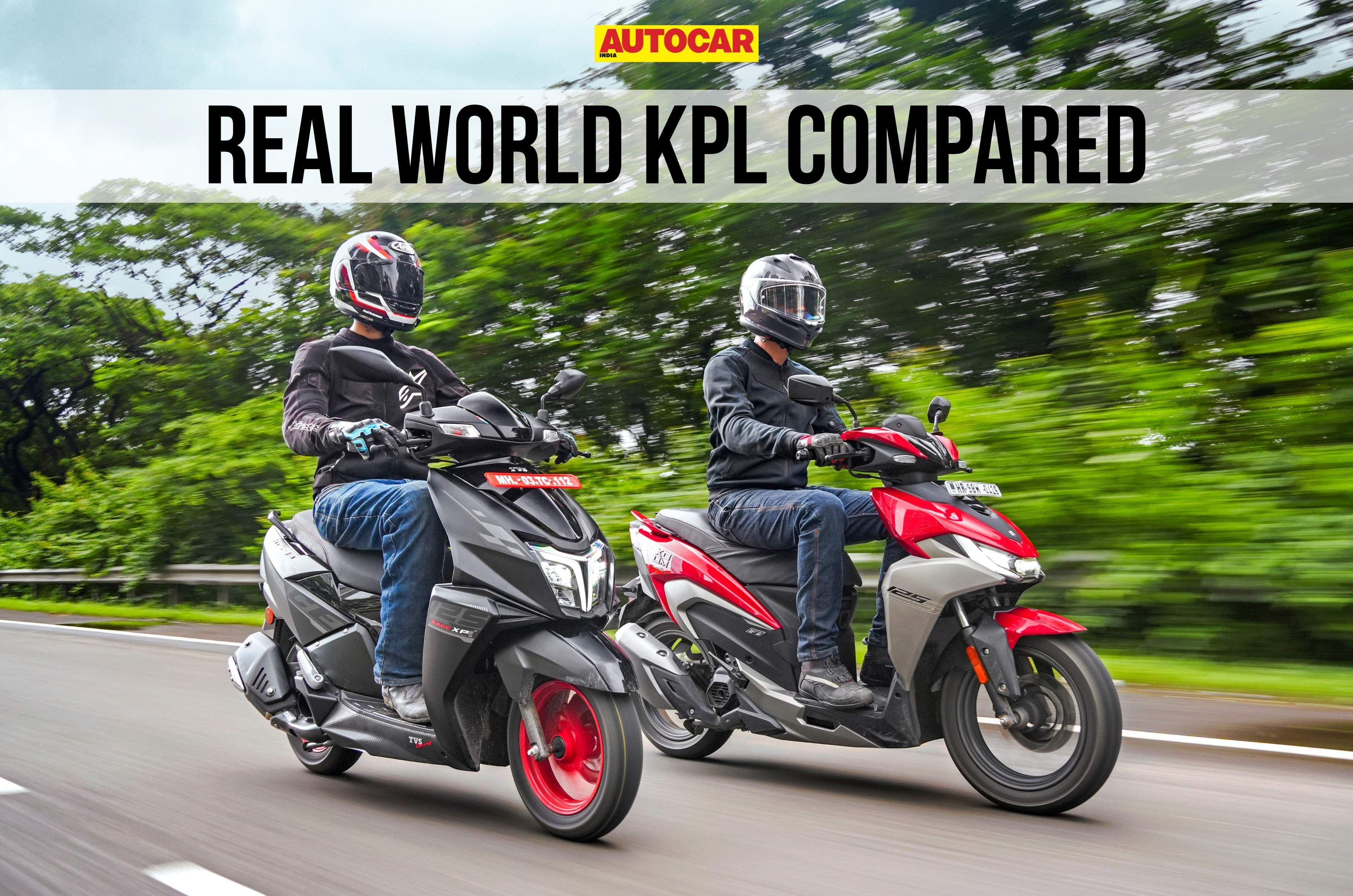
Sporty 125cc scooters like the Hero Xoom 125 and the TVS Ntorq Race XP are aimed at younger riders looking for a mix of performance, features and style. Both scooters offer peppy engines and sharp styling, and both stand out from the sea of commuter-focused 125s. We’ve tested both scooters in city and highway conditions to see how their real-world fuel efficiency figures compare.
- Hero Xoom 125 shares its engine with Destini 125
- Ntorq Race XP produces a higher 10.1hp and 10.9Nm
Hero Xoom 125 vs TVS Ntorq Race XP real world fuel efficiency test
Hero Xoom 125 milage is 56.20kpl
In our city cycle, the Hero Xoom 125 came out ahead, returning a noticeably higher 56.70kpl which is 4.3kpl more than the Ntorq Race XP. This difference comes mainly from the stop-start system which aided quite a bit during our city run. Out on the highway the Xoom 125 manages to score a reasonably high 55.70kpl. Combined, this comes up to an average fuel efficiency figure of 56.20kpl.
TVS Ntorq Race XP is more efficient on the highway
The Ntorq claws back an edge on the highway with a higher 56.66kpl, likely because of its slightly more powerful engine and more relaxed cruising nature. In the city the Ntorq isn’t as efficient as the Xoom 125 but still manages a respectable 52.4kpl figure. Combined these two figures give us an average fuel efficiency number of 54.53kpl.
Both the Hero Xoom 125 and TVS Ntorq Race XP deliver some of the best real-world fuel efficiency figures in the 125cc segment, with just 1.67kpl separating them on average. The Xoom has a slight edge in city mileage, while the Ntorq does better on the highway. But what tips the scales is the Ntorq’s larger tank and better power-to-weight ratio. It goes farther on a tank, is quicker, and offers riding modes that add both performance and flexibility to the equation.
Hero Xoom 125 vs TVS Ntorq Race XP price and specification
| Price and specs | ||
|---|---|---|
| Hero Xoom 125 | TVS Ntorq Race XP | |
| Price | Rs 86,900 - Rs 92,900 | Rs 90,153 - Rs 1.10 lakh |
| Engine | 124.6cc, air-cooled, single-cyl | 124.8cc, air-cooled, single-cyl |
| Power | 9.9hp at 7,250rpm | 10.1hp at 7,000rpm |
| Torque | 10.4Nm at 6,000rpm | 10.9Nm at 5,500rpm |
| Fuel capacity | 5 litres | 5.8 litres |
| Kerb weight | 121kg | 111kg |
The Hero Xoom 125 makes 9.9hp and 10.4Nm from its 124.6cc air-cooled engine. With a kerb weight of 121kg, it’s heavier than you might expect — but Hero’s tuning ensures it still feels responsive in city traffic. The throttle is linear, and the CVT calibration doesn’t aggressively chase revs, which along with its stop-start system helps explain its strong city mileage.
The TVS Ntorq Race XP makes 10.1hp and 10.8Nm, and at just 111kg, it’s 10kg lighter than the Xoom. The extra power and lighter weight give it snappier acceleration and better top-end performance. And thanks to its two riding modes — Street and Race — the Ntorq gives riders the option to dial things back for efficiency or go all-out when needed.
Autocar India’s fuel-efficiency testing
Our fuel-efficiency testing routine starts by first brimming the tank and ensuring the bike is running the manufacturer’s recommended tyre pressures. The bike is then ridden on fixed city and highway routes, where we maintain average speeds that best mimic real-world scenarios as well as keeping speed limits in mind. The payload on the bikes is kept constant by balancing rider weights and ballast, ensuring consistency across different vehicles and riders. At the end of the test cycle, the fuel tank is once again filled to the brim, giving us an accurate figure of how much fuel has been consumed against the trip meter reading.
Also see: Triumph Speed T4 vs Royal Enfield Hunter 350 real world fuel efficiency and range compared

